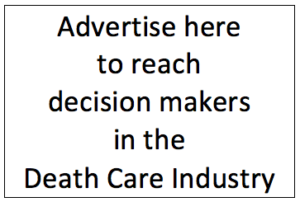The “Guaranteed” preneed philosophy — is it working in high inflation times?

I think that there still is a discussion about “Guaranteed” vs. “Non-Guaranteed” preneed funeral contracts. Although, I would argue that for the past decade or so the vast majority of preneed accounts sold by funeral homes are “Guaranteed”. By that I mean that the services and merchandise is picked out at pre-arrangement time and fully funded by a life policy of that face value. As time passes and the account holder dies the funeral provider, who also did the pre-arrangement, provides those services for the value of the death benefit at the time of death with no additional charges to the consumer/preneed client.
That has seemed to work very well, and depending on the state laws where written a funeral director may get more or less than his current charges for the services. In some states he may not be able to keep any overage and any value of the policy above his funeral statement for services rendered must be sent to the named Seconday Beneficiary.
So, at least in those states, a funeral provider may have to guarantee goods and services that could have a higher value at death than the proceeds of the policy. That works out as a “discount” by the funeral provider. On the other hand, the funeral home can never take an overage so over a number of contracts he probably has discounts because of under-inflationary growth that are never offset by gains on the other side.
For most funeral homes that method works just fine and the idea of having a preneed account on the books and the commission it generated when put in place may make up for the number of discount funerals that happen.
In Minnesota where I worked the law required that the beneficiary of a preneed policy be “Any funeral home as their interest may appear” which meant we could only be paid, as primary beneficiary, the amount of our statement. In essence, we never received an overage but if the preneed policy was “guaranteed” we could be underpaid.
It also allowed the consumer/preneed client a “Bag of Money” that was not tied to a certain funeral home. That was a handy sales tool when dealing with seniors who may be thinking about moving to a southern state or, as they got older, to the community of their children. It allowed them a “Bag of Money” in their pre-arrangement account that was “portable”.

Tom Anderson
Funeral Director Daily
Again, as to “Guaranteed preneeds” they generally work very well and are probably not a financial issue unless, like recently, you have a very high inflation rate for a period of time and a fixed low-interest rate growth preneed product. And, some costs you just cannot control — such as utilities, property taxes, the cost of steel or lumber in casket manufacturing, the cost of concrete in vault manufacturing. In essence, you can try to control costs. . . .but not all are controllable by you.
So, what does that mean on “Guaranteed” funeral pre-arrangements? For our assumptions let’s just say a preneed client has a work-up of exactly $9,000 for the services he/she wants to pre-arrange. Furthermore, we will say for a one-time premium of that amount that the insurer adds $1,000 of face value to that policy. So, the policy starts at $10,000 of face value and has an annual 2.5% growth rate on the $10,000 face value (which came with a $9,000 single premium).
That policy, in ten years will have an appreciated face value of $12,800.
If you run the inflationary numbers on the $9,000 of merchandise and services (and profit) for the same ten years. If your inflationary costs went up:
- 3% annually — you would have a cost of service of $12,095
- 4% annually — you would have a cost of service of $13,222
- 5% annually — you would have a cost of service of $14,660
And, at death you provide the services that cost you, including profit, that much and receive the $12,800 in full payment from the policy.
As you can see from our small illustration on one potential account, the average annual inflationary costs probably have to get above 4% to create a loss of margin large enough to worry about. In our example that 4% is about 1.5% higher than the insurance company is crediting the policy.
Our example does show the importance of receiving some “insurable additional value” to the policy in order to make this work stress-free. For instance our example case adds $1000 of face value to the $9,000 single premium. Without that “Bonus” the face value — compounding at 2.5% annually for ten years — would only be worth about $11,520. The lack of the additional “Bonus insurance”, many times called a “Bump” in the Death Care world, would increase the odds of a deficit between the funeral home’s actual costs and the insurance benefit provided.
By the way, as you can find with this inflation calculator here, in this time of “higher than average” inflation, a purchase of $100 in 2020 would cost $124 in 2025 — which is an annual average inflation of 4.49%.
Do “Guaranteed” funeral preneed accounts work in high inflationary times? That is truly a question that has to be answered by each Death Care provider owner. Again, one has to weigh the benefits of securing a future death call with the potential for getting a lower than inflationary return on the sale cost. And, each individual owner will have their own anxiety levels on the level of discounted funerals they execute.
There is no “right or wrong” decision on operating your preneed department with “Guaranteed” or “Non-Guaranteed” policies. However, making sure that you know the math and the ramifications of that math is essential in providing the best possible scenario for your funeral home.
More news from the world of Death Care:
- Nebraska Veterans Cemetery dedicated in Grand Island. Video news story and print article. KFXL – Fox Nebraska (NE)
- Marshall Funeral Home serving community for a century. New Castle News (PA)
- This Death Care company has an alternative to traditional burials. Inc.
- New online platform offering online support. Midwest Radio (Ireland)
- An editorial analysis: Grenada’s cemetery crisis. . . . . The New Today (Grenada)
- Chatham funeral home introduces water-based aquamation to Southwestern Ontario. CTV News (Canada)
Enter your e-mail below to join the 3,191 others who receive Funeral Director Daily articles daily:
“A servant’s attitude guided by Christ leads to a significant life”






















Beyond inflationary considerations with respect to guaranteed preneed contracts; there’s another dynamic in play, in my opinion. A number of funeral homes, in an effort to offset diminished revenues resulting from an increasing cremation rate, raise the charges on their “traditional” funerals… well beyond the rate of inflation… and some firms do that quite frequently. It’s no wonder then, when a guaranteed preneed is converted to an at-need, the firm experiences giving a significant “discount.”